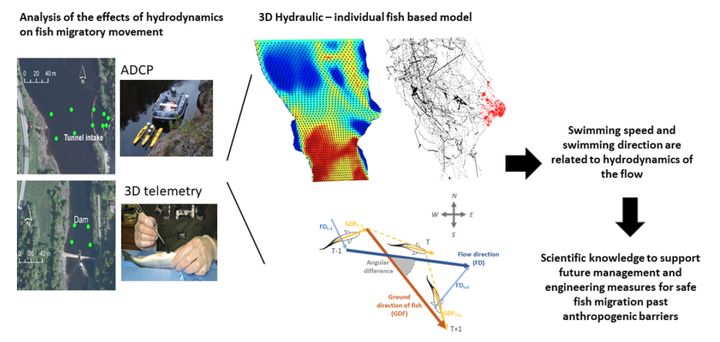The effects of hydrodynamics on the three-dimensional downstream migratory movement of Atlantic salmon

Abstract
Anthropogenic structures in rivers are major threats for fish migration and effective mitigation is imperative given the worldwide expansion of such structures. Fish behaviour is strongly influenced by hydrodynamics, but little is known on the relation between hydraulics and fish fine scale-movement. We combined 3D Computational fluid dynamics modelling (CFD) with 2D and 3D fish positioning to investigate the relation between hydrodynamics and the downstream movement of Atlantic salmon smolts (Salmo salar). We show that fish use fine-scale flow velocity and turbulence as navigation cues of fine-scale movement behaviour. Tri-dimensional swimming speed and swimming direction can be explained by adjustments of fish to flow motion, which are linked to fish swimming mode. Fish diverge from the flow by swimming at speeds within or higher than their prolonged speeds (0.38–0.73 m s−1). Flow direction plays a pivotal role on fish swimming performance, with high upstream and downwards velocities impacting swimming the most. Turbulence is also influential, by benefiting swimming performance at low TKE (b 0.03 m2 s−2) or constraining it at higher levels. We show that fish behaviour is affected by interactions of several hydraulic variables that should be considered jointly.